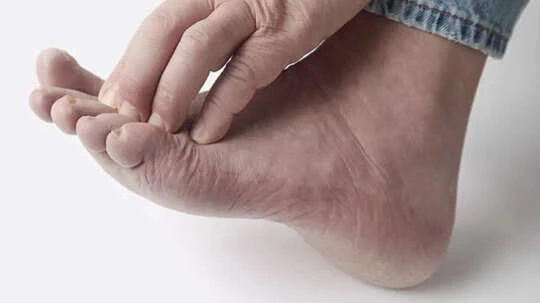For those with diabetes, every aspect of their life can be a challenge. From nerve damage to poor blood circulation and foot complications, mobility is often at risk.
However, there are many advanced foot care solutions and smart wearable technologies, help those battling high blood sugar levels to reclaim independence, stay active, and live life on their own terms.
Diabetes not only damages nerves and reduces blood circulation in the feet but also spikes the risk of ulcers, infections, and, in severe cases, amputations. Doctors say even a small wound can become a major issue if not taken care of in the early stages. And that is why footwear and timely intervention are essential.
“Traditional foot care involved regular physical examinations and basic protective footwear. But today, technology is transforming how foot health is monitored and managed-making independence and active living a reality,” Dr Ranjit Unnikrishnan, Vice Chairman, Dr Mohan’s Diabetes Specialities Centre, told Times Now.
How are smart wearables a game-changer for diabetic foot health?
In recent years, many footwear companies have started using smart wearable technology to provide extra comfort and care to those with diabetes, providing real-time monitoring, early alerts, and personalised insights. Here is how they are making a difference:
Smart shoes
Designed for those with diabetes, these shoes are equipped with sensors that monitor pressure points in real time. These shoes can help detect abnormal pressure distribution, which leads to calluses, blisters, or ulcers. “By alerting the wearer through a connected mobile app, these shoes allow for immediate action, whether it is adjusting gait, changing footwear, or seeking medical advice,” said Dr Unnikrishnan. A few kinds of these smart shoes also track activity levels, helping individuals ensure they are staying active without overstraining their feet.
Pressure-mapping insoles
Pressure-mapping insoles are not just innovative but also embedded with multiple micro-sensors that help track foot pressure patterns throughout the day. “Pressure hotspots can indicate areas at risk for injury. The insole sends data to a smartphone or wearable device, enabling early detection of changes in foot health before they become visible,” Dr Unnikrishnan added.
A few pressure-mapping insoles are also helpful in providing gait analysis – thereby helping people improve their walking pattern to reduce strain and prevent injuries.
Temperature-sensing wearables
A specific change in temperature across many areas of the foot can be an early sign of infection. However, smart socks and insoles with thermal sensors help detect these temperature variations and send alerts, enabling preventive action before an ulcer develops.
Rehabilitation technology
Rehabilitation devices like smart exercise bands, vibration therapy tools, and balance-training systems can help restore strength and mobility, especially in those recovering from foot ulcers or surgery. “Virtual physical therapy programmes, paired with wearable trackers, ensure that recovery exercises are done correctly and consistently.”
What is the role of AI and remote monitoring in diabetes foot care?
Experts believe artificial intelligence is making smart foot care even more powerful, as it can analyse large amounts of sensor data and identify subtle trends that you may be overlooking – and hence predict the risk before a problem starts.
Dr Unnikrishnan explained that through various platforms, like telemedicine, the data can be shared with doctors in real time. Thereafter, the podiatrist can monitor a patient’s foot health from miles away and recommend immediate intervention if needed, which not only saves time and cost but also prevents any further health complications.
Tips to maintain healthy feet for diabetics
Despite using smart wearables, a few important tips to follow daily include:
- Inspect your feet daily for cuts, redness, swelling, or blisters
- Wear appropriate footwear, preferably shoes designed for people with diabetes or with extra cushioning
- Avoid walking barefoot, even at home
- Keep feet clean and moisturised
- Control blood sugar levels, as it increases the risk of nerve and circulation problems.
